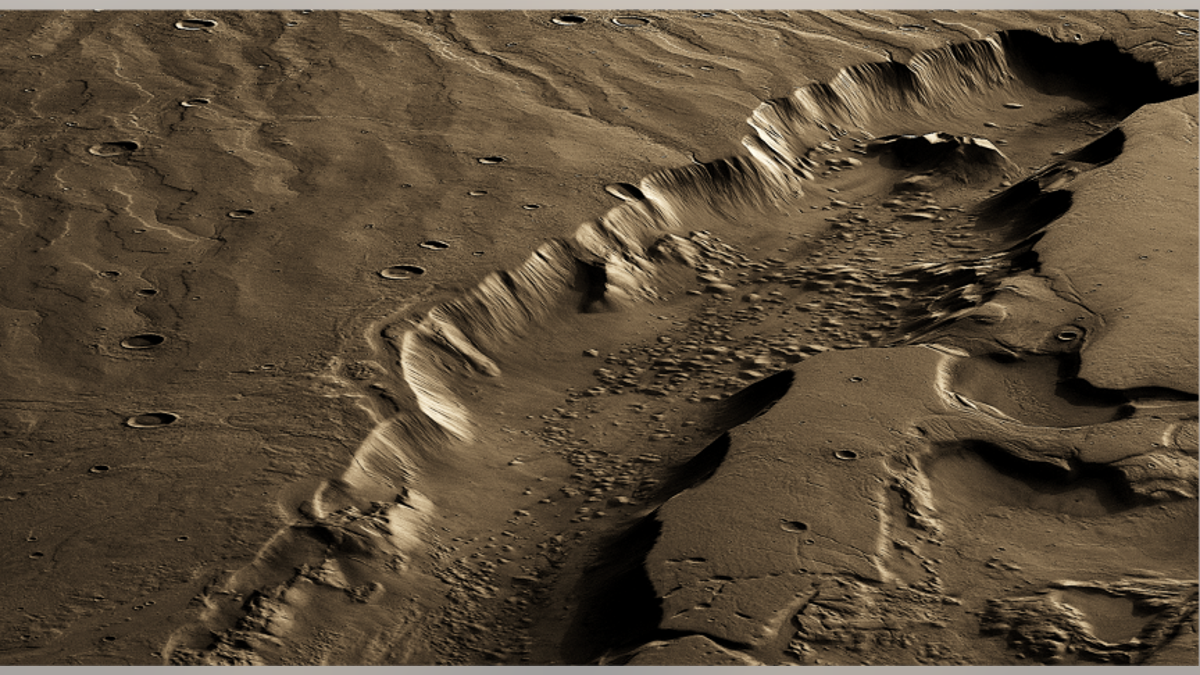NASA to send rover to Mars to look for signs of ancient life
Mars Perseverance set to launch; Robert Zubrin, president of the Mars Society, looks forward to the historic launch.
Life does not exist on Mars currently, but a new study suggests that if there were aliens on the Red Planet in its past, they may have lived "far below" the surface.
The research, published in Science Advances, suggests that ice sheets below the surface melted because of geothermal heat, generating water, providing the perfect environment for any form of life.
“Even if greenhouse gases like carbon dioxide and water vapor are pumped into the early Martian atmosphere in computer simulations, climate models still struggle to support a long-term warm and wet Mars,” said the study's lead author Lujendra Ojha, an assistant professor at Rutgers University-New Brunswick, in a statement. “I and my co-authors propose that the faint young sun paradox may be reconciled, at least partly, if Mars had high geothermal heat in its past.”

A vertically exaggerated, false-color view of a large, water-carved channel on Mars called Dao Vallis. Image: ESA/DLR/FU Berlin, CC BY-SA 3.0 IGO. 3D rendered and colored by Lujendra Ojha
RESEARCHERS DISCOVER MARS HAD WATER BEFORE THERE WAS LIFE ON EARTH
The findings could help researchers understand the faint young sun paradox, which notes approximately 4 billion years ago, the sun was "much fainter" than it is now. This should have caused the Martian surface to freeze; instead, it was warm and wet.
A separate group of researchers suggested in January 2020 that the water on Mars once contained the right ingredients to support life. Last month, another group of researchers suggested there was water on Mars' surface 4.4 billion years ago, before life existed on Earth.
Ojha and the other researchers looked at various datasets to see if geothermal heat would have been present, or possibly, during the Noachian era (4.1 billion to 3.7 billion years ago) and determined there was, well below the surface.
NASA's InSight lander, which landed on Mars in November 2018, could aid experts in understanding geothermal heat and if it played a role in life on Mars, the researchers said in the statement.
“At such depths, life could have been sustained by hydrothermal (heating) activity and rock-water reactions,” Ojha added. “So, the subsurface may represent the longest-lived habitable environment on Mars.”
MASSIVE LAVA TUBES ON MARS AND THE MOON COULD BE HOME TO LIFE, RESEARCHERS FIND
In October, a separate group of researchers found that Mars has an abundance of liquid water in the underground lakes in its south pole.
In 2018, scientists made the incredible discovery of a "stable body of liquid water" on Mars. The three lakes are roughly 6 miles across, nearly a mile deep and approximately 12 miles away from the lake discovered in 2018.
NASA recently launched the Perseverance rover into space to explore Mars. While on the Red Planet, the rover will perform a variety of different functions, including looking for evidence of ancient life.





















